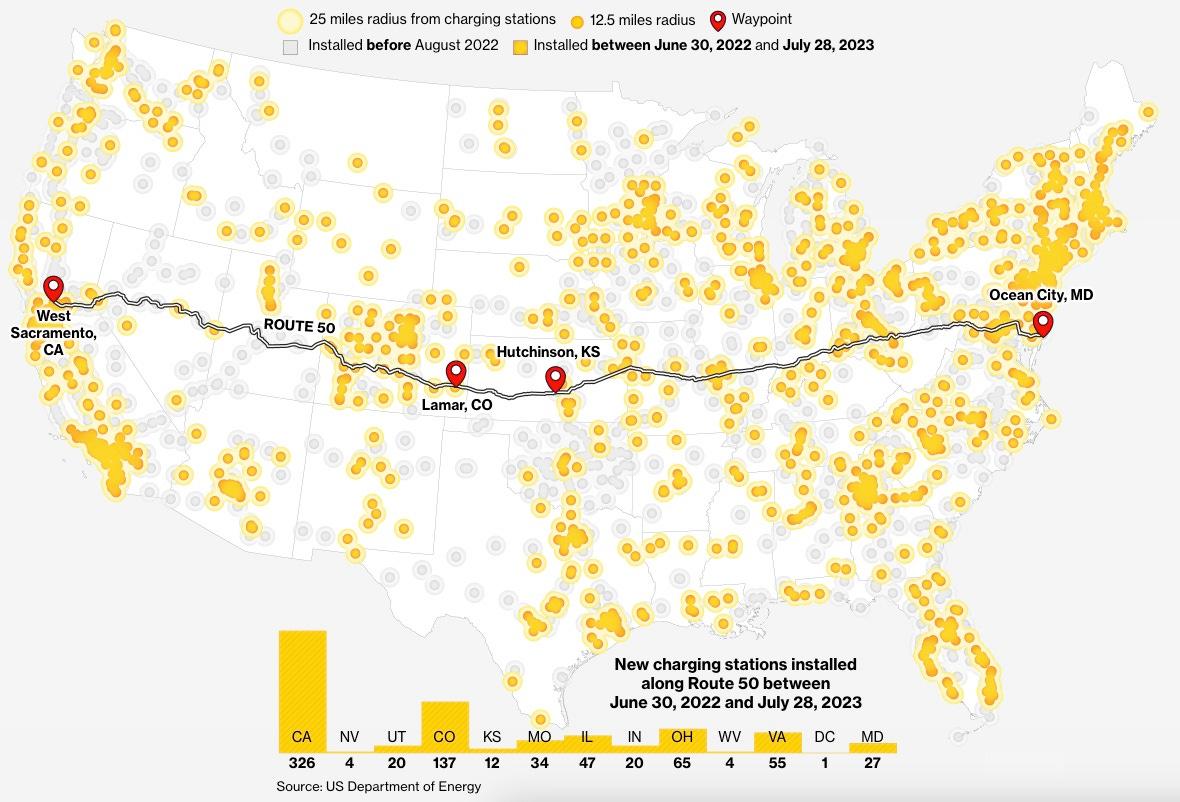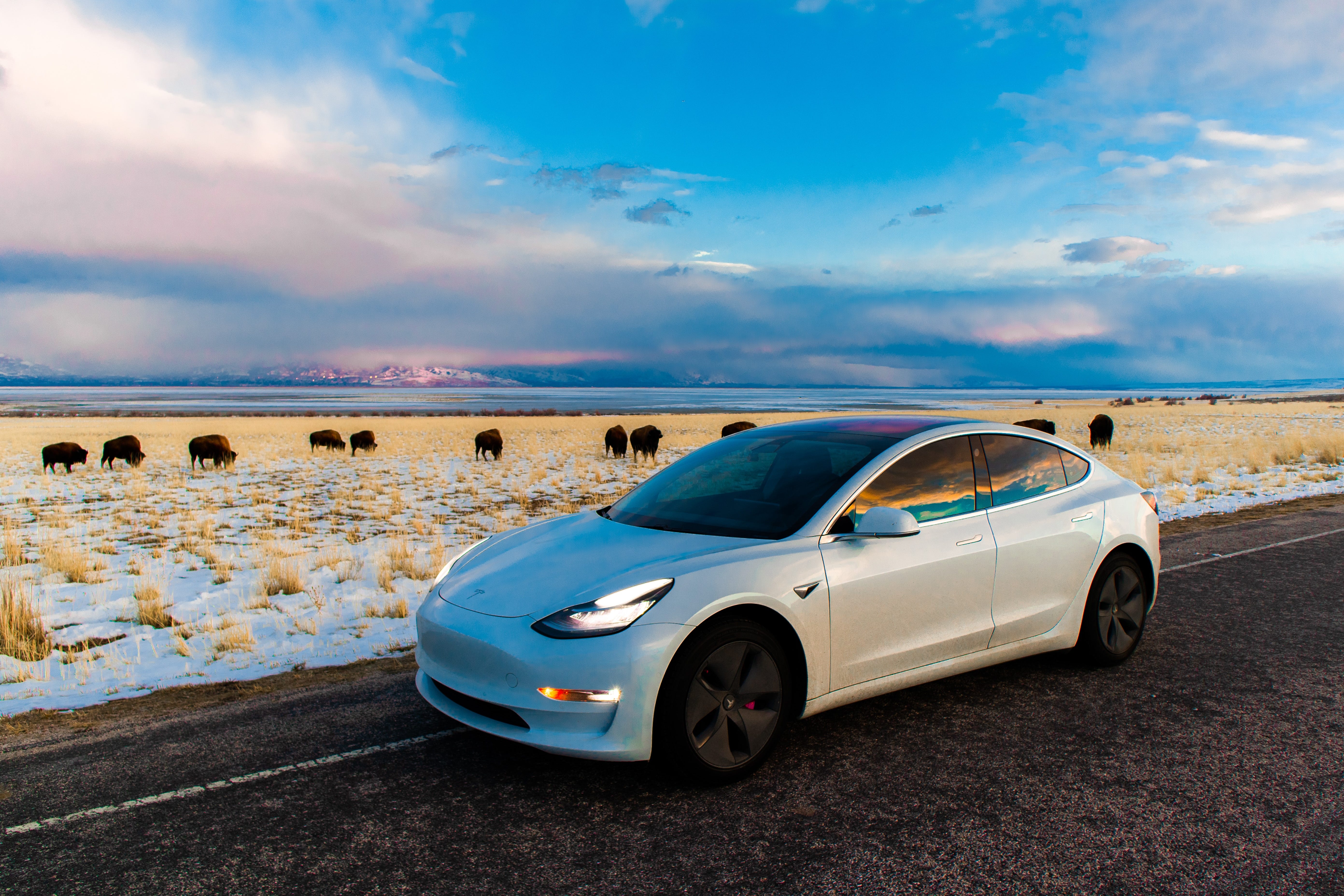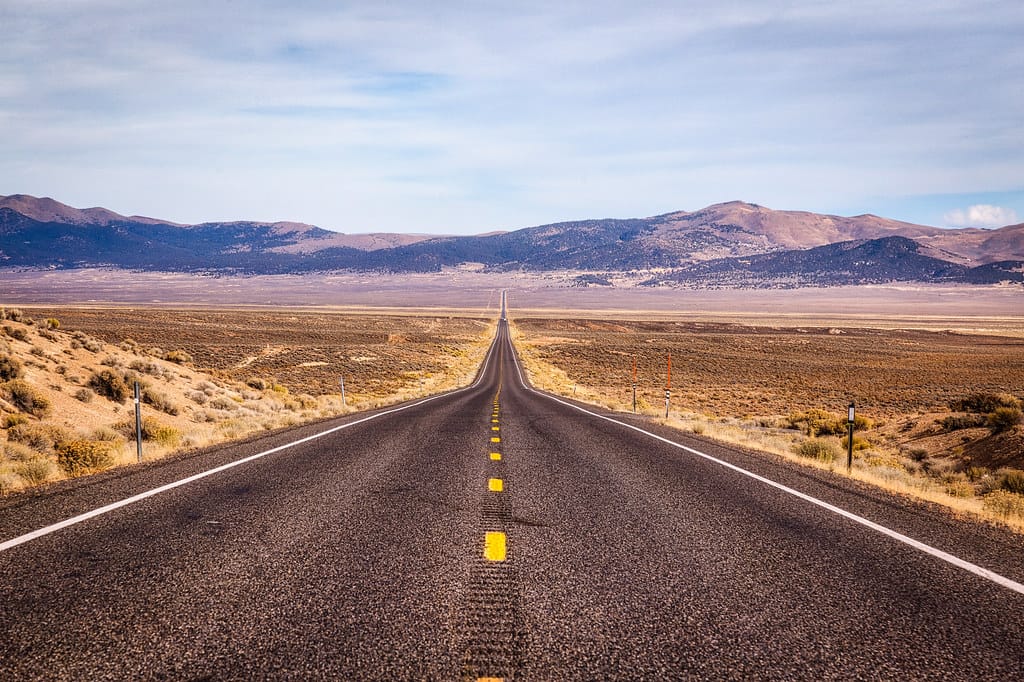Alright picture this - you and your buddies just graduated undergrad and you're trying to figure out where to go for your post-grad trip. Your dad brings up another one of his college stories about the time they drove across America on Route 50 and suddenly, you have a great idea...
Wait... I got it! Let's do a cross country road trip!
Great idea! I just got the new Ford F-150 Lightning (you're welcome Ford for the free marketing), this would be a great way to break it in!
Cool!
Awesome!
Yay!
And with a round-table of high-fives and cheers with only the Champagne of beers of course, they were off -
But wait, can you make it across the country in an EV? What about charging? Aren't there long stretches of highway without chargers (aka electron deserts)?
Ah yes, the naivety of a fresh college grad - well, lets see how they fare shall we:
History
US Highway 50 opened almost a century ago, traversing all the way from Sacramento, California to Ocean City, Maryland. The highway stretches across desert valleys, mountain ranges, great plains and more, traditionally attracting very few travelers due to the scarcity of activities and gas stations along the way. In fact, it was so bad that Life Magazine dubbed a large portion of Route 50 to be "The Loneliest Road in America", a nickname that would end up sticking even until today. Given the factors disincentivizing gas-powered travelers, one could only imagine the issues EV travelers would face throughout their journey. However with interest brewing from retailers, private investors, and government funding - it looks like EVs may revitalize the Great American Roadtrip in a more sustainable way.
Infrastructure is Growing
Recent developments in the last 12 months (ending July 31) have brought hope to the EV adventurers looking to make the trek (like our friends here). America's EV charging deserts are filling in thanks to a wave of subsidies from utilities and state govs as well as private investors and a pivot to more efficient business models. The expansion is a really good indicator of the rising interest from US drivers, and progress towards Biden's goals for EVs and EV charging. There are now about 4,800 public fast-charging stations in the US with over a quarter of them coming online in the last 12 months. It's also important to note that these are all excluding the charging infrastructure still set to come from Biden's $5 billion IRA plan. The Fed has been approving proposals from all 50 states, the first of which will likely show up starting next year.
In 2021 President Biden set a goal of reaching 50% of new cars in the US running on batteries by 2025 and pledged $5 billion for fast-charging stations every 50 miles along 75,000 miles of interstates and highways.

Now you're either thinking 1 of 2 things here, and maybe its both-
- Wow! Looks like EV fast-charging infrastructure is being ramped up pretty fast and I feel a bit more at ease about my range-anxiety. Maybe I will look into an EV next!
- Wait, isn't more chargers funded by the Fed going to be kind of redundant? Especially if the market is already boosting their construction all over the map?
And you would be kinda right about both -
Although many new charging stations being rolled out may sound redundant, its adding layers of service in regions where EV adoption is decent and/or rapidly growing. For example, in a lot of densely-populated cities, retrofitting parking garages to have more EV charging will be more beneficial as adoption of EVs surge and more consumers look for charging capabilities in the places they frequent. And in areas where there is a lack of any chargers, new infrastructure will open up vast swaths of the American heartland for EV drivers, hopefully calming range anxiety for many and spurring adoption in areas that have traditionally been lagging.
The influx of public chargers is essential for boosting EV sales, especially in states where they are currently lagging behind in EV adoption. The Midwest in particular has some of the country's lowest EV adoption rates - whereas in California 1 in 5 vehicles registered this year were electric.
Economic Opportunity
So far it looks like our friends are doing great on their road trip. Starting in the west at Sacramento, they've cruised through California, Nevada and Utah with chargers galore. Even the Colorado mountains haven't been too bad and thanks to a new charger stood up in Lamar, Colorado - some 30 miles from the border to Kansas, the group of friends will be able to safely make it to their half-way point. In fact, the once desolate area of Lamar now sees road trippers much more often thanks to the new chargers, attracting businesses like the towns first movie theater, a night club, and a coffee shop all for travelers to re-charge while their vehicles re-charge.
And while chewing on a croissant at another newer charging spot in Vincennes, Indiana - one of our friends asks the group - "I wonder if these make any money? Maybe EV chargers are the next Bitcoin!"
ah yes, I too have been there my friend.

And unfortunately, building a network of rural EV chargers is really only half the battle. The other, more challenging part is turning a profit on them. Charging companies are trying to figure out how to most effectively share the costs and risks of standing up a charging station by staking out prime real-estate locations. Over the past year, charging companies have been benefitting from a number of subsidies from utilities and states eager to jump in on the EV party, amongst private investors as well.
Charging execs are aggressively looking at convenience stores, outlet malls, and other activity or commercial retail destinations who are eager to attract travelers that will have or can benefit from having 20 or so minutes to kill while re-charging. A new business model is being used by charging companies where - retailers and other partners pay the company to build and maintain chargers, instead of the charging company outright owning them. So far the model has allowed for chargers to move into certain travel corridors without the companies themselves having to take on significant risk.
Using this model, chargers are only required to have a 20% utilization rate to deliver target profit margin while also minimizing wait times for drivers.
For the remainder of our friends trip, they shouldn't come across many other difficulties finding charging as they collectively sing Country Road's until their ears bleed. While Route 50 may be all caught up in terms of chargers, those electron deserts still linger elsewhere - like nearly 600 miles between Whitefish, Montana and Willinston, North Dakota. But let's be honest, when do you plan on making that trek... maybe after grad school.
Inspiration article: Bloomberg








